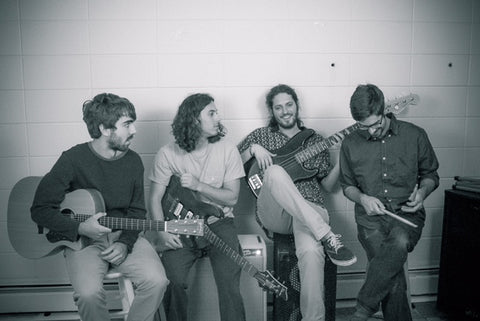-
Athens, GA based eclectic rock band The Orange Constant (TOC) will be self-releasing their 2nd full length album Point of Reference on Fri. March 24th. The album was recorded at Chase Park Transduction in Athens during October - December 2016 with Drew Vandenberg (discography includes of Montreal, Mothers, Kishi Bashi), and was mastered by Joe Lambert (catalog includes Animal Collective, Local Natives, The Black Crowes).
-
Containing songs written over a span of four years, Point of Reference displays a striking maturity in TOC’s songwriting. Compared to their debut album Time to Go, this release embraces more risk taking in the studio, fueled by Vandenberg’s experimental leanings. Although TOC has been labeled a jam band in the past, this release demonstrates that they are more likely to be inspired by 70’s AOR and contemporaries like My Morning Jacket than Phish.
-
We couldn't be more pleased to premier one of TOC's latest singles, "Something We Can Use," which will be featured on March's release,
Point of Reference. We recently caught up with
Lee Guentert (drums) to discuss the new album and learn a little more about what we can expect from The Orange Constant in 2017. See below to read more and stream the single today. Make sure to check the band's
official website and
Facebook page for all of the latest updates on The Orange Constant!
-
-
Listen to the exclusive premier of The Orange Constant's "Something We Can Use" here:
-
-
Q&A with Lee Guentert of The Orange Constant
-
Tell us a little bit about the recording process for the new album.
-
Lee: For Point of Reference we decided to work with Drew Vandenberg, known primarily for working with experimental and indie acts such as of Montreal, Kishi Bashi, Mothers, and the Futurebirds. He met with us several times at our rehearsal space before we began recording to get a feel for the songs and pitch ideas for new arrangements. That was great because it helped us get to know him better, and kept our time in the studio more efficient. For our first session, we spent 10 days in the studio tracking the songs and adding overdubs. The four of us, plus our friend Chris Freiberg on keyboards, recorded all of the songs live. We then made edits to those tracks, added horns, more keys, vocals, etc. We were trying to keep the process as organic and traditional as possible, similar to how bands in the 70's recorded, while also implementing new sounds and styles that aren't common in the jam scene.
How was this experience different than that of the first album?
-
Lee: We learned a lot from John Keane and couldn't have asked for a better experience recording our debut
Time to Go, but it was nice working with Drew because he is closer in age. The recording process (live tracking, adding overdubs,etc.) was fairly similar to the first album, but Drew was constantly pushing us to be weirder and to utilize more unique guitar tones and sounds. He also worked at a slower pace (in a good way), and wanted to try every idea before dismissing it. Overall, Drew took on a more producer-like role and shaped the songs more than Keane, while also keeping the experience creative and fun. We had a lot of good laughs in the control room!
-
How would you say the new material reflects the overall direction of the band?
-
Lee: In some ways I believe it fits the overall direction, but then again, genre shifting has always been a part of The Orange Constant. In many ways this album shows us at this point in time, just like how the first album represented that period. I think our live shows will continue to incorporate more jamming and improvisation, but our studio material will likely hone in on the songwriting and focus on exploring studio possibilities.
-



